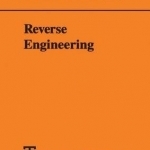Reverse Engineering
BookThis item doesn’t have any media yet
1996 | Technical
Looking at modern industrial products, one can recognize a variety of different complex shapes. All these products are not only designed, they are styled. Everybody knows about the importance of styling, if the product is a car, but today even "simple" consumer appliances do not only have to fulfil their function, they must also look nice. In addition, even purely technical products like turbines or valves are designed with very complex shapes to make them work more efficiently. Thus, optimising the shape of products is one of the key factors in the process chain of development. Today, there are various CAx-systems, which have evolved to be the basic tools for design, calculation, simulation and manufacturing in almost all kinds of industrial environments, but the improvement of the product's shape is -in most cases -done manu- ally on the physical model. This break in the CAD information flow can be overcome with REVERSE ENGINEERING techniques reconstructing the shape-describing CAD surfaces (Bezier-, NURBS-surfaces or others) from the modified physical model. nd Therefore the 2 Workshop on current CAx-problems was dedicated to REVERSE ENGINEERING.
During the workshop were presented * the newest research results of surface reconstruction for a given set of points * the methods and tools for problems.in Reverse Engineering of some of the most important CAD vendors (Holometric Technology, IBM/Dassault, ICEM, Imageware, Matra Data- vision, Tebis). Additionally, structural aspects in Reverse Engineering, possible future developments and new research directions were discussed.
Related Items:
| Published by | Springer Fachmedien Wiesbaden |
| Edition | Unknown |
| ISBN | 9783519026334 |
| Language | N/A |
Images And Data Courtesy Of: Springer Fachmedien Wiesbaden.
This content (including text, images, videos and other media) is published and used in accordance
with Fair Use.
